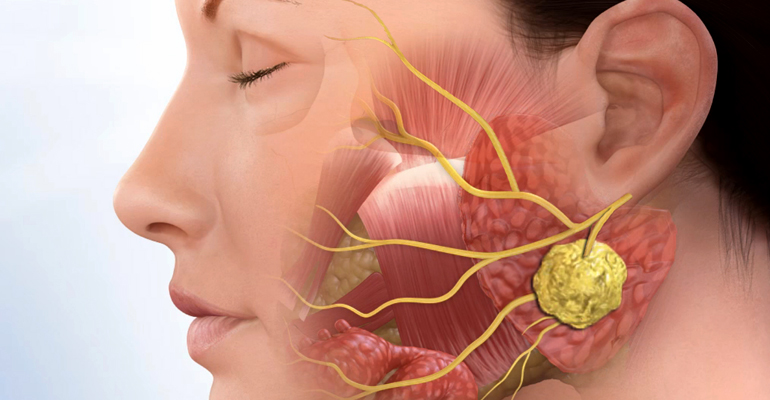For Appointment
- +91-9870019481 / +91-9769019481
- Mon - Sat: 04.00PM to 06.00PM

Parotid Surgery
Parotid surgery is a specialized surgical procedure performed on the parotid glands, the largest of the salivary glands, located on either side of the face just in front of the ears. The parotid glands produce saliva to aid in digestion and maintain oral health. Parotid surgery is typically performed to remove tumors, both benign and malignant, or to address chronic infections or other abnormalities affecting the gland.
Types of Parotid Surgery
Superficial Parotidectomy
- This is the most common type of parotid surgery, involving the removal of the superficial lobe of the parotid gland. It is usually performed to excise benign tumors such as pleomorphic adenomas or Warthin's tumors, which are often located in this part of the gland. Care is taken to preserve the facial nerve, which runs through the gland and controls facial movements.
Total Parotidectomy
- In this procedure, the entire parotid gland is removed. It is typically indicated for malignant tumors that have spread beyond the superficial lobe or are deeply located within the gland. Total parotidectomy is more complex due to the close proximity of the facial nerve, and the risk of nerve damage is higher.
Partial Parotidectomy
- This surgery involves the removal of only a portion of the parotid gland, often targeting smaller, localized tumors. It is a more conservative approach, aiming to preserve as much healthy gland tissue and facial nerve function as possible.
Facial Nerve Monitoring and Reconstruction
- During parotid surgery, intraoperative facial nerve monitoring is often used to help protect the facial nerve from injury. In cases where the nerve must be sacrificed due to tumor involvement, reconstructive techniques may be employed to restore facial function, such as nerve grafting or muscle transfers.
Indications for Parotid Surgery
- Benign Tumors: Most parotid gland tumors are benign, and surgical removal is often recommended to prevent growth and potential complications. Pleomorphic adenoma is the most common benign tumor in the parotid gland.
- Malignant Tumors: Parotid gland cancers, though less common, require prompt surgical intervention to remove the tumor and prevent the spread of cancer.
- Chronic Infections or Abscesses: Recurrent infections or abscesses in the parotid gland may necessitate surgical removal if other treatments fail.
- Obstructive Sialadenitis: Blockage of the salivary ducts, often due to stones (sialolithiasis), may require surgery if the obstruction cannot be relieved by less invasive methods.
Recovery and Postoperative Care
- After parotid surgery, patients typically experience some swelling and discomfort, which can be managed with pain relief medications. A drain may be placed to prevent fluid buildup at the surgical site, which is usually removed within a few days.
- Patients may experience temporary weakness or paralysis in the facial muscles on the affected side due to manipulation of the facial nerve. In most cases, this resolves over time, but in rare cases of nerve damage, permanent facial weakness may occur.
- Regular follow-up is essential to monitor healing and address any complications. If a malignant tumor was removed, additional treatments such as radiation therapy may be recommended.
Risks and Considerations
Parotid surgery is a delicate procedure, primarily due to the close relationship between the parotid gland and the facial nerve. The primary risk is facial nerve damage, which can lead to temporary or permanent facial paralysis. However, with modern surgical techniques and experienced surgeons, the risk is minimized, and the outcomes are generally positive.
Parotid surgery is crucial for addressing conditions of the parotid gland, and when performed by skilled surgeons, it can effectively treat both benign and malignant conditions, improving patient outcomes and quality of life.

